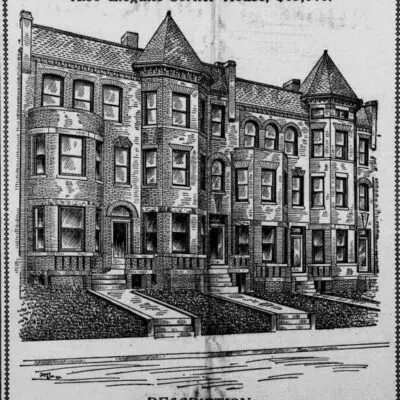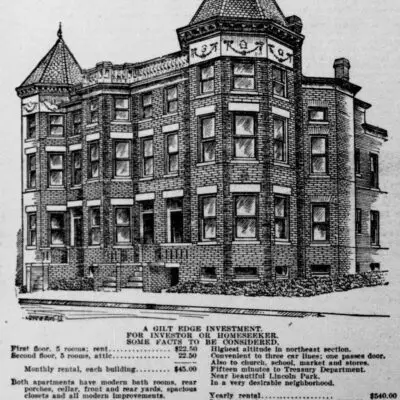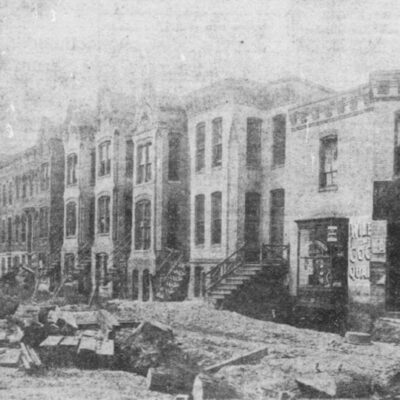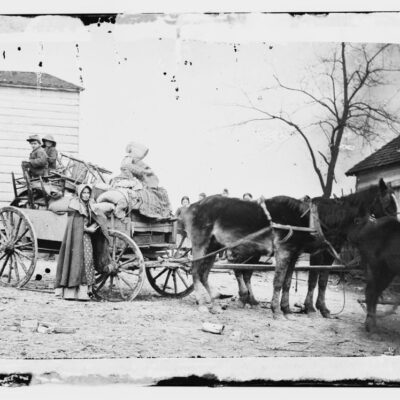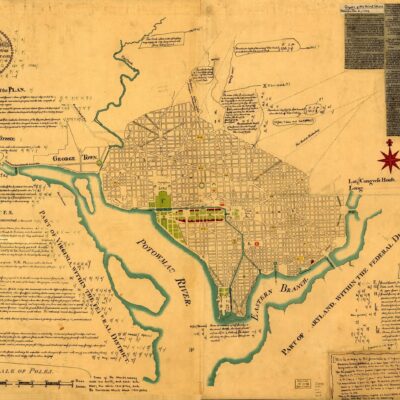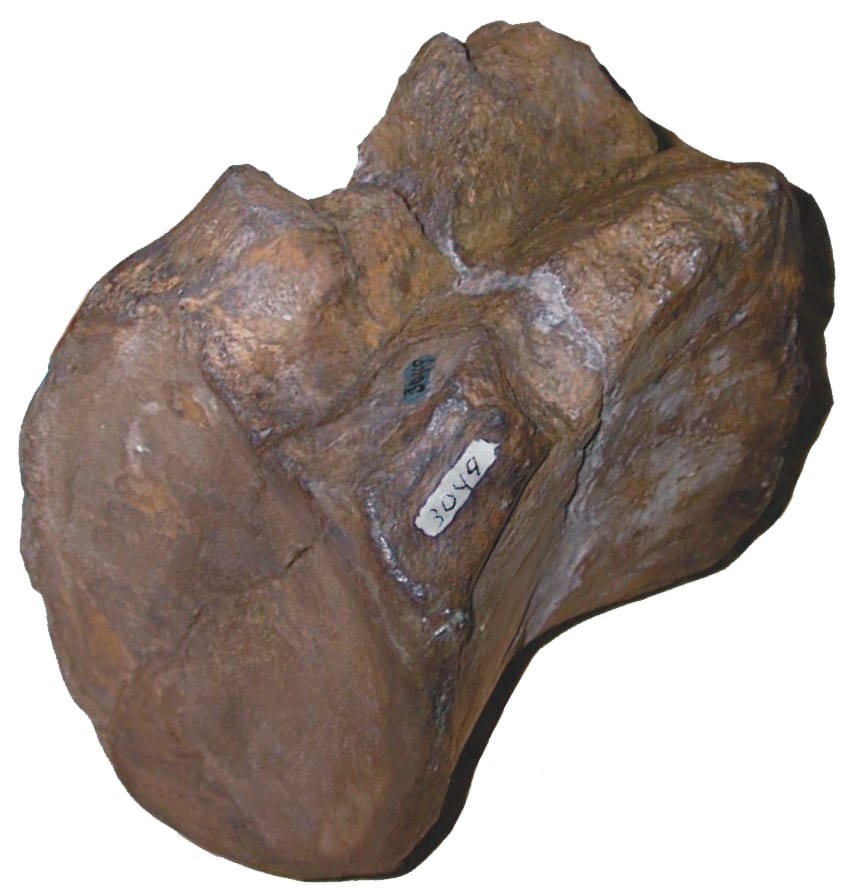
Workers were digging a sewer trench beneath a Capitol Hill street in 1898. They came upon a few fossil fragments — among them, a 6-inch bone that now represents the largest piece of the District’s controversial “official dinosaur,” the Capitalsaurus.
The contractor on that sewer project, J. K. Murphy, presented his workers’ discovery to Smithsonian scientists on January 28, 1898. Here’s how the fossils were described in an interview with the Smithsonian’s curator of vertebrate paleontology, Dr. Charles. W. Gilmore:
“About 30 years ago,” he said, “while excavating for a sewer out on F street, between First and Second streets southeast, workmen came upon some curious large bones and brought them to me. They were found about 45 feet down. One of the bones was a section of of the backbone and tail of a dinosaur.” –Washington Post, 6/13/1934
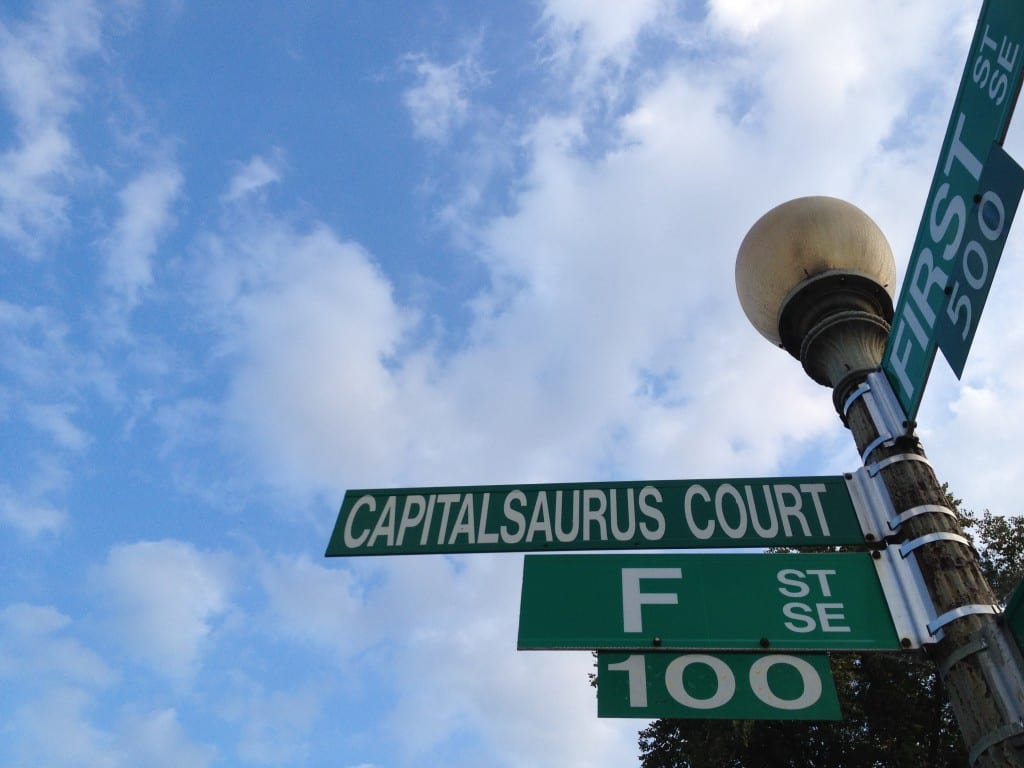
Dr. Gilmore was often asked to describe the District’s prehistoric landscape. This particular bone was central to his depiction:
“One of the bones found in Northeast Washington” he said, “was in a state of almost perfect preservation. It consists of a single tail vertebra that can be recognized as belonging to one of the huge flesh-eating forms of dinosaur, an animal not less than 30 feet in length. This monster, when prowling around on its hind legs, would be approximately 15 feet high. What its presence would mean to a crowd of men and women in the National Capital today may be gauged without much difficulty.
“Visualize to your heart’s content an area populated with the horrible forms one sees in nightmares, and you will scarcely go wrong in drawing a picture of the District of Columbia during that distant age.“-Washington Post, 11/27/1927
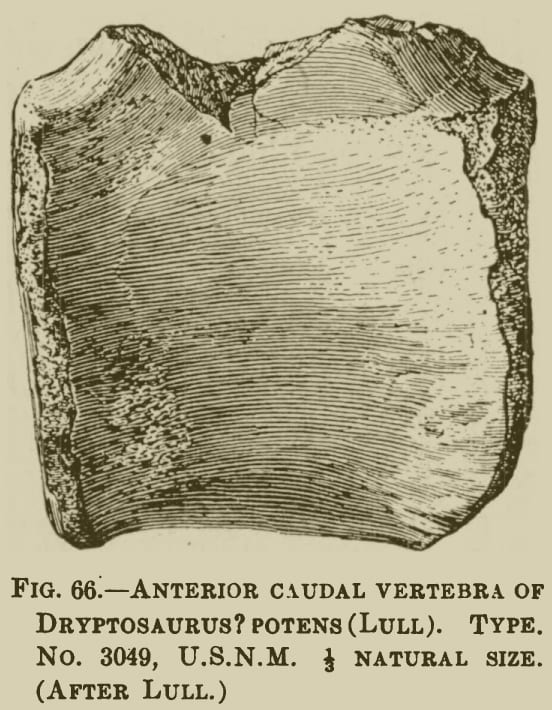
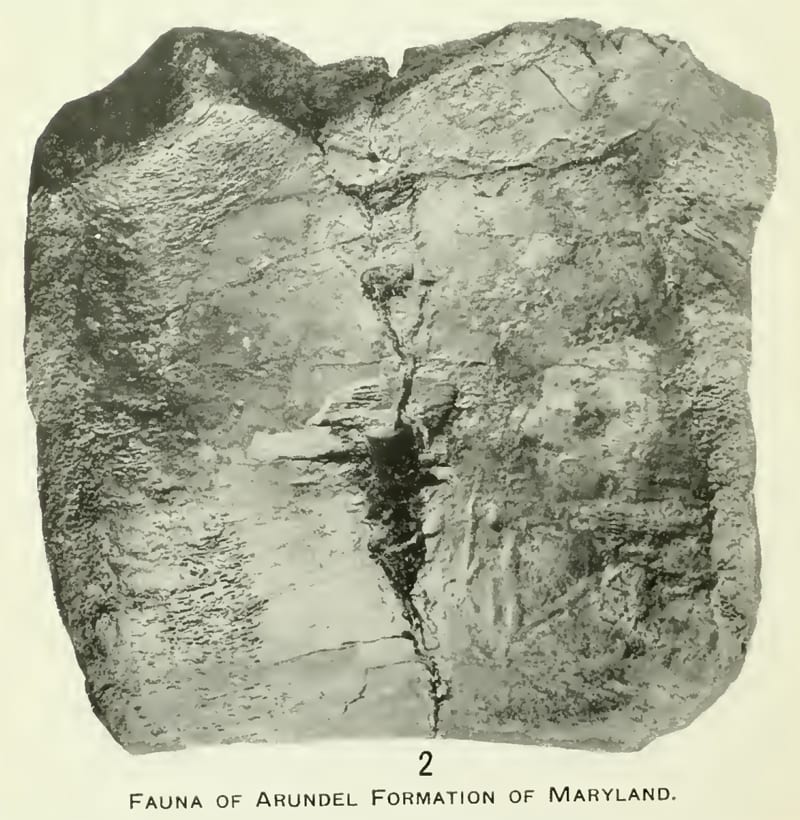
More than a century after it was unearthed, there isn’t consensus on the actual identity of this prehistoric beast.
Paleontologists don’t have much material to study. The bone you see here is basically it.
In 1911, a Yale professor identified the vertebra as part of Creosaurus potens. By 1920, the Smithsonian’s Dr. Gilmore determined that it closely resembled a similar tail bone from a dinosaur found in New Jersey. With some uncertainty, he renamed it Dryptosaurus potens.
A new identity emerged in the late 1980s when local paleontologist Dr. Peter M. Kranz examined the F Street fossil. He determined that the vertebra bore little resemblance to Dryptosaurus bones in other collections. In a series of articles, Dr. Kranz promoted a new name for the species, Capitalsaurus.
The scientific world hasn’t yet been convinced — and the capitalsaurus name remains only an informal designation. But D.C. Council has slightly lower standards. They embraced the classification wholeheartedly in the “Official Dinosaur Designation Act of 1998, Bill 12-538.” Capitalsaurus is the District’s official dinosaur and January 28 is “Capitalsaurus Day” in D.C., marking the date that Murphy presented the bone to the Smithsonian.
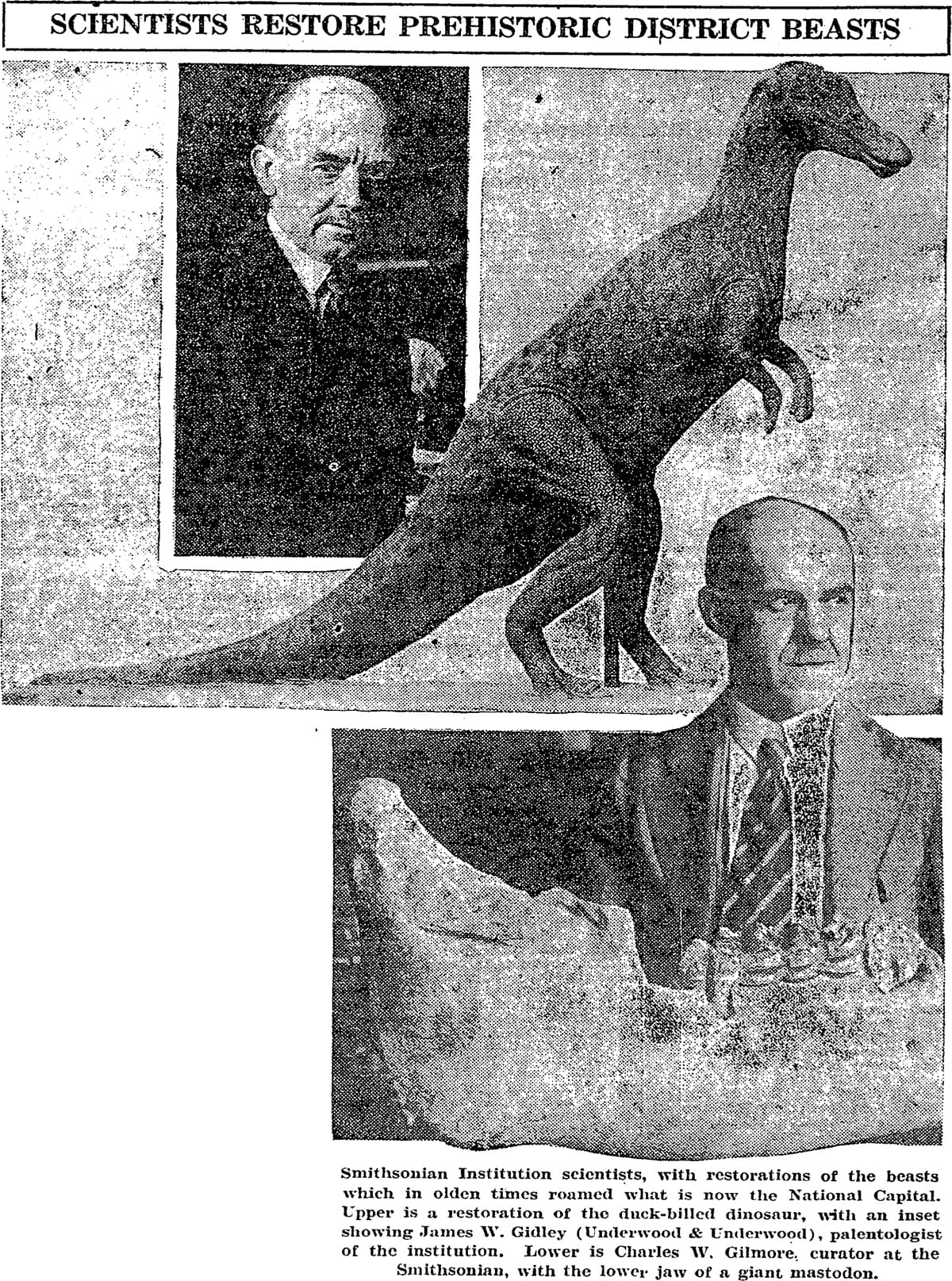
The block of F Street, SE where the fossil was discovered was formally dedicated as Capitalsaurus Court on January 28, 2000 (it’s the block that fronts Garfield Park).
It’s worth noting that the single bone of Capitalsaurus (or whatever you choose to call it) is hardly the only dinosaur fossil unearthed in Washington, D.C. Later sewer projects yielded even larger specimens. A few homeowners have stumbled upon fossils in their backyards. Dinosaurs definitely roamed our streets before they were streets. Dr. Kranz — the biggest promotor of Capitalsaurus — has an excellent PDF booklet on the topic, Dinosaurs of the District of Columbia (2003).
This post was written by Aaron who stumbled upon the capitalsaurus name while looking for directions on Google Maps (where you’ll see the 100 block of F Street, SE incorrectly labeled as Capitolsaurus Way). Reach him on Twitter, @aaronemyers.

